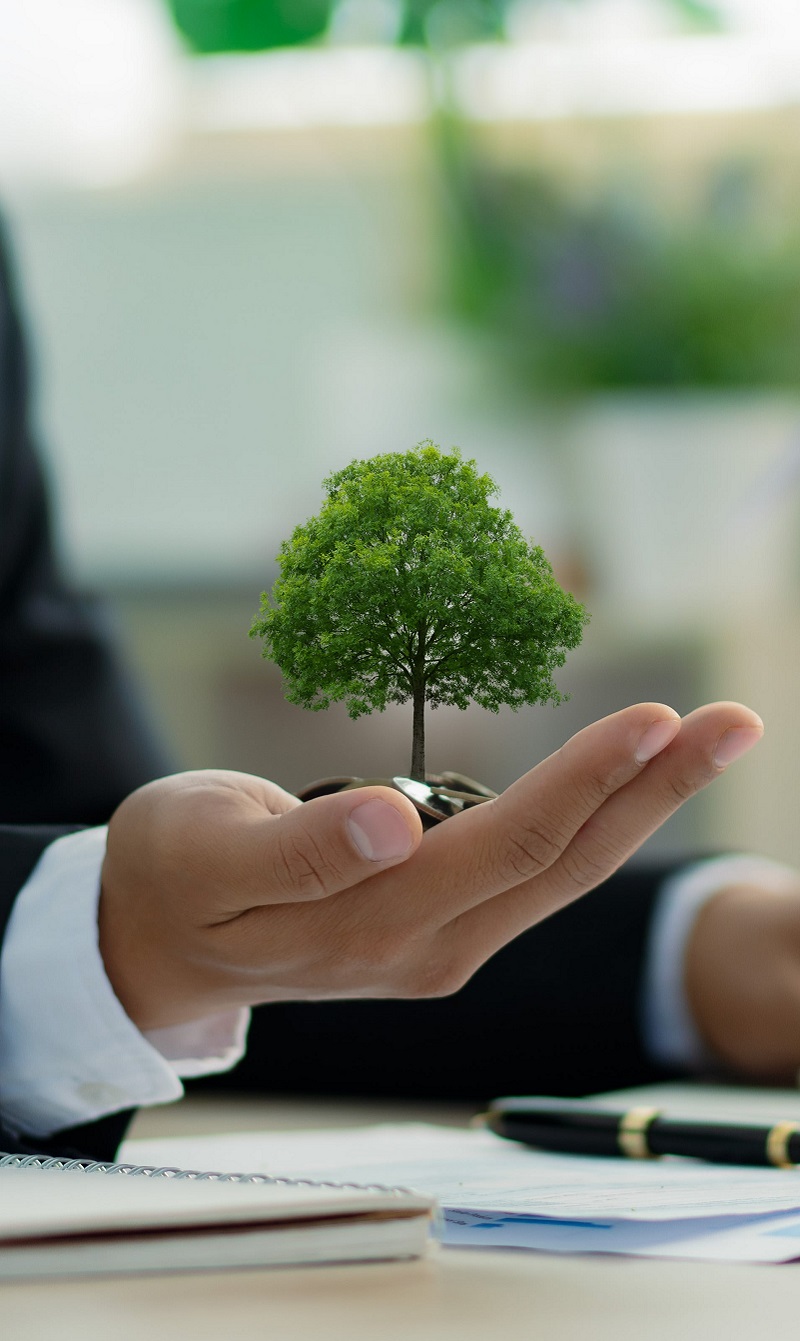The Path Towards Net Zero
Affirmative policy needs to increasingly align with on-ground action to drive an accelerated growth scenario. Analysis by Rituparna Majumder, Industry Principal – Economic Analytics at Frost & Sullivan. This article is part of In Focus special issue.
Amid a rapidly evolving economic and geopolitical landscape and with the world economy routinely faced with polycrisis, climate change, environmental preservation and sustainable development have gained prominence in global policy planning as governments work to navigate present vulnerabilities while ensuring future development. The green economy, once a buzzword, is a major driving force behind the changing world order. Alignment with green economics not only helps countries in achieving targets from the Paris Accord and the United Nations Sustainable Development Goals, but also ensures economic resilience through sustainability objectives.
Frost & Sullivan’s recent thought leadership on Sustainable Investment Ensuring Economic Resilience and Unlocking New Growth Opportunities reveals a strong positive correlation between sustainability and economic resilience[1]. Frost & Sullivan predicts that under an accelerated sustainability adoption scenario (ASAS), world GDP will reach the USD200 trillion mark by 2029, which is a decade earlier than the baseline forecast by the International Monetary Fund.
The below exhibit shows projected GDP under the two scenarios for key countries.
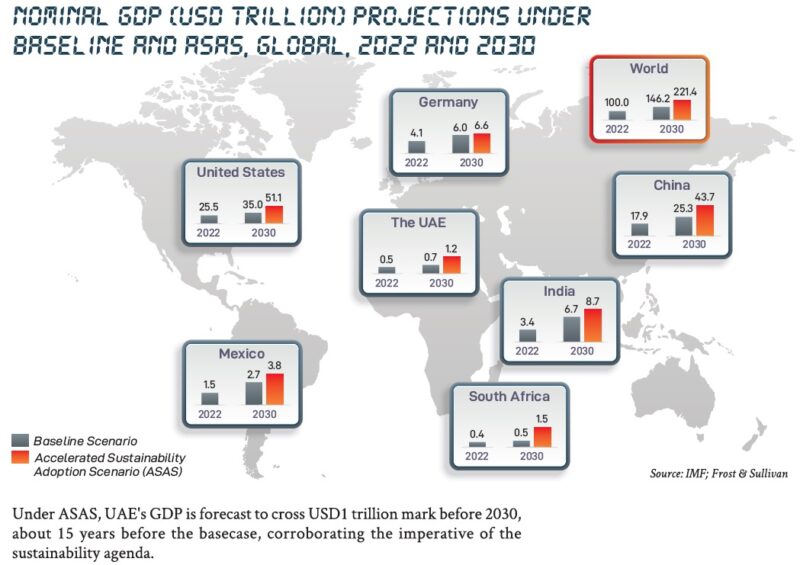
Global Net Zero Commitments and the UAE’s Key Initiatives
Globally, there’s a concerted push toward net-zero emissions, with over 140 countries committing to net-zero targets. This encompasses approximately 88 per cent of the world’s emissions, showcasing a growing alliance among nations, cities, businesses and institutions in this crucial endeavour. However, the efforts fall short of doing enough. The exhibit below indicates that most carbon-neutral goals are in the mere discussion phase without concrete plans of action in place.
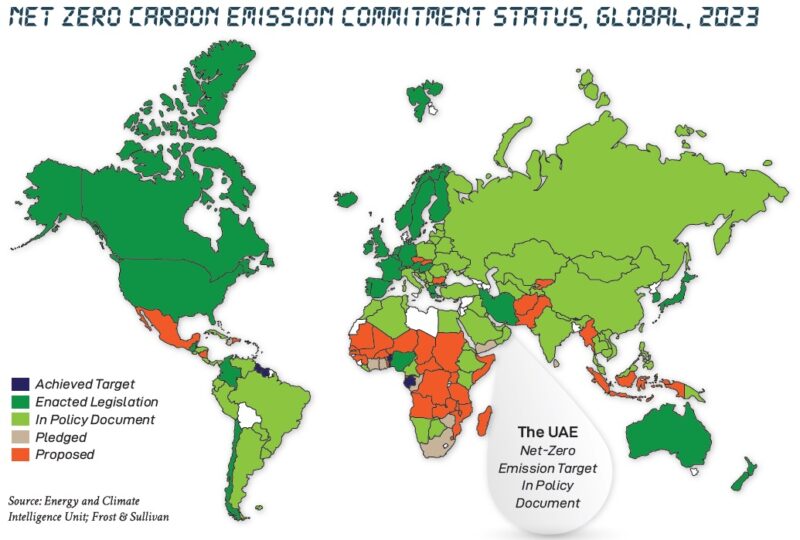
Nations are benchmarked according to the status of their net zero targets. ‘Enacted Legislation’ is considered more binding than ‘in policy document’; ‘Declaration/pledge’ is more serious than ‘proposed/in discussion’. – Net Zero Tracker Methodology
While Saudi Arabia has a 2060 net-zero emissions target, the UAE is driving energy transition with policies like net zero by 2050 and the Green Agenda (2015–2030), with the UAE being a frontrunner of climate action in the Middle East and North Africa region. UAE targets a 19 per cent reduction in GHG gases by 2030 from 2019 levels, driven by plans including a reduction in industrial emissions from 103 metric ton CO2e[2] in 2019 to seven million metric ton by 2050[3]. Emphasising renewables, efficiency, electric vehicles and green building materials, the UAE aims to meet its targets and positions itself as a sustainable development leader.
Abu Dhabi is rapidly shifting to sustainable energy, aiming for 55 per cent clean energy by 2025 with projects like the Barakah nuclear plant and Al Dhafra Solar Photovoltaic (PV), while slashing building energy consumption by 40 per cent. The UAE has invested over USD50 billion in global clean energy initiatives, prioritising emission reduction targets. Efforts like Masdar City’s USD15 billion commitment and the UAE-US PACE initiative, focusing on innovation and USD100 billion investment for 100 GW of clean energy by 2035, underscore the urgency for fossil fuel divestment.
GCC’s Sustainable Energy Momentum is Harnessing Growth Opportunities
Progress towards a sustainable world is driving humungous short to long-term opportunities across sectors. Listed below are a few innovations and opportunities that are likely to disrupt the GCC energy sector in the coming decade.
Investment Opportunities, GCC Energy Sector and Allied, 2023 – 2030
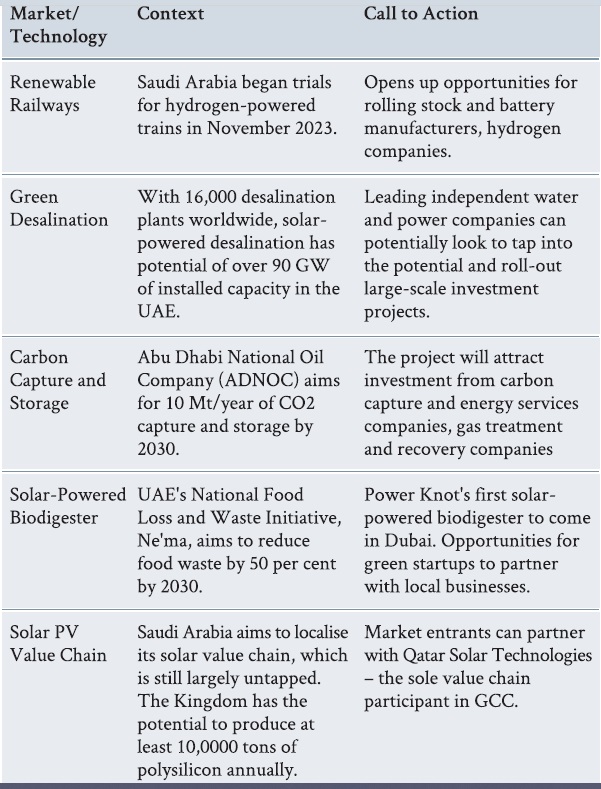
Strategies and Decision-Making Frameworks for Public and Private Stakeholders
To achieve net zero goals, both the public and private sector must proactively work to expand capabilities, engage in collaborative models and support institutions across sectors. Outlined below are key roles and best practices for each stakeholder group.
Revamping Strategies and Decision-Making Frameworks in Public and Private Stakeholders
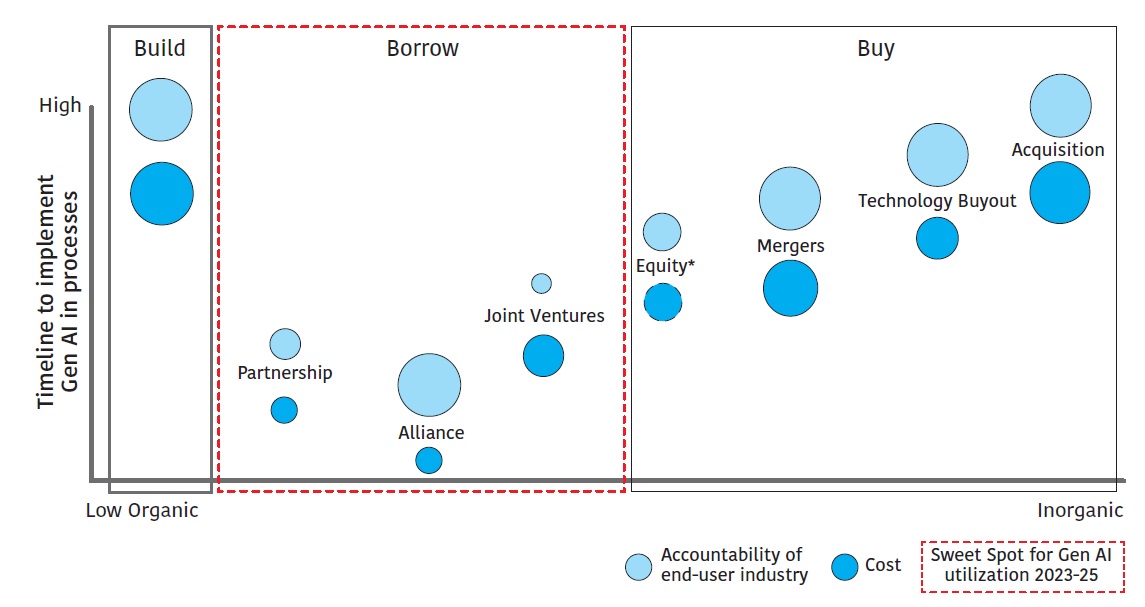
Transitioning to net zero emissions poses a complex challenge, yet it holds vast opportunities. Urgent and decisive action is essential to fast-track sustainability goals and ensure a smoother path to net zero.
[1] Economic Resilience has been assessed through a composite score comprising six key pillars: Economic Stability, Economic Diversification, Infrastructure Development, Political Stability, and Social Protection
[2] metric tons of carbon dioxide equivalent (MTCO2e)
[3] Accelerating Action Towards a Green, Inclusive and Resilient Economy, Third Update of Second Nationally Determined Contribution for the UAE, UNFCCC





